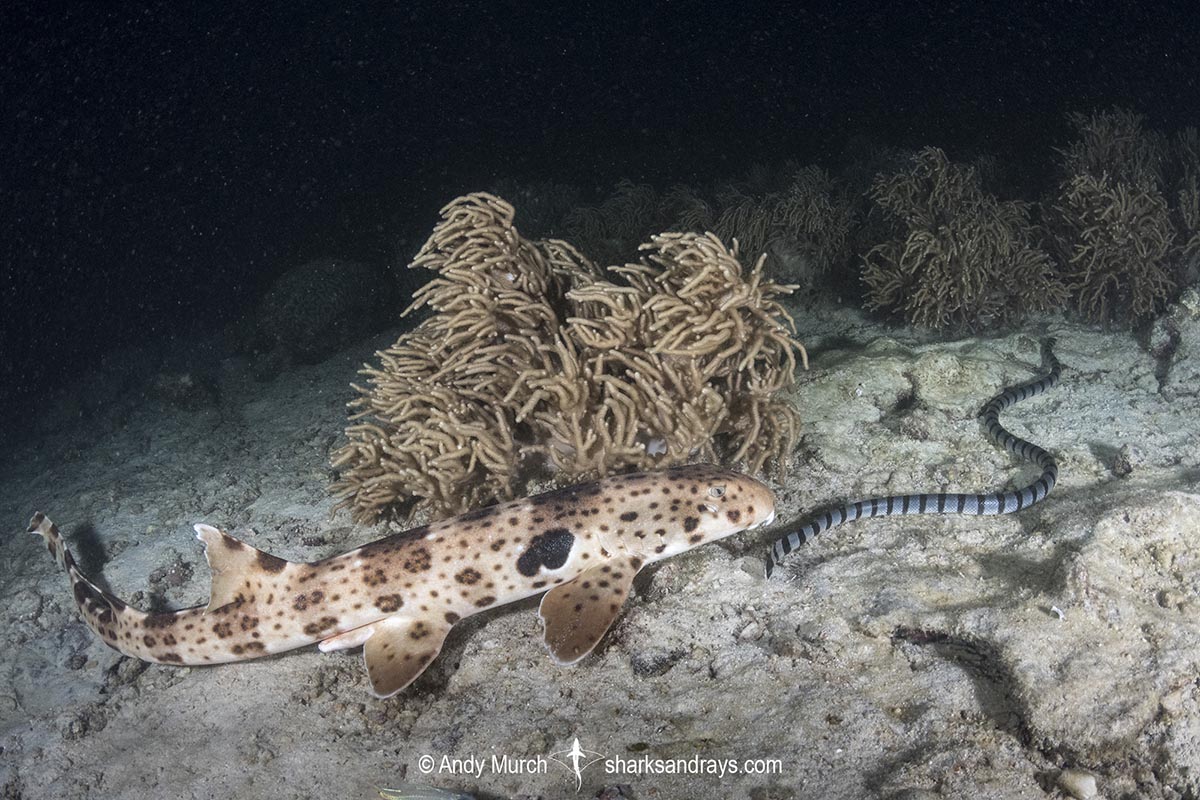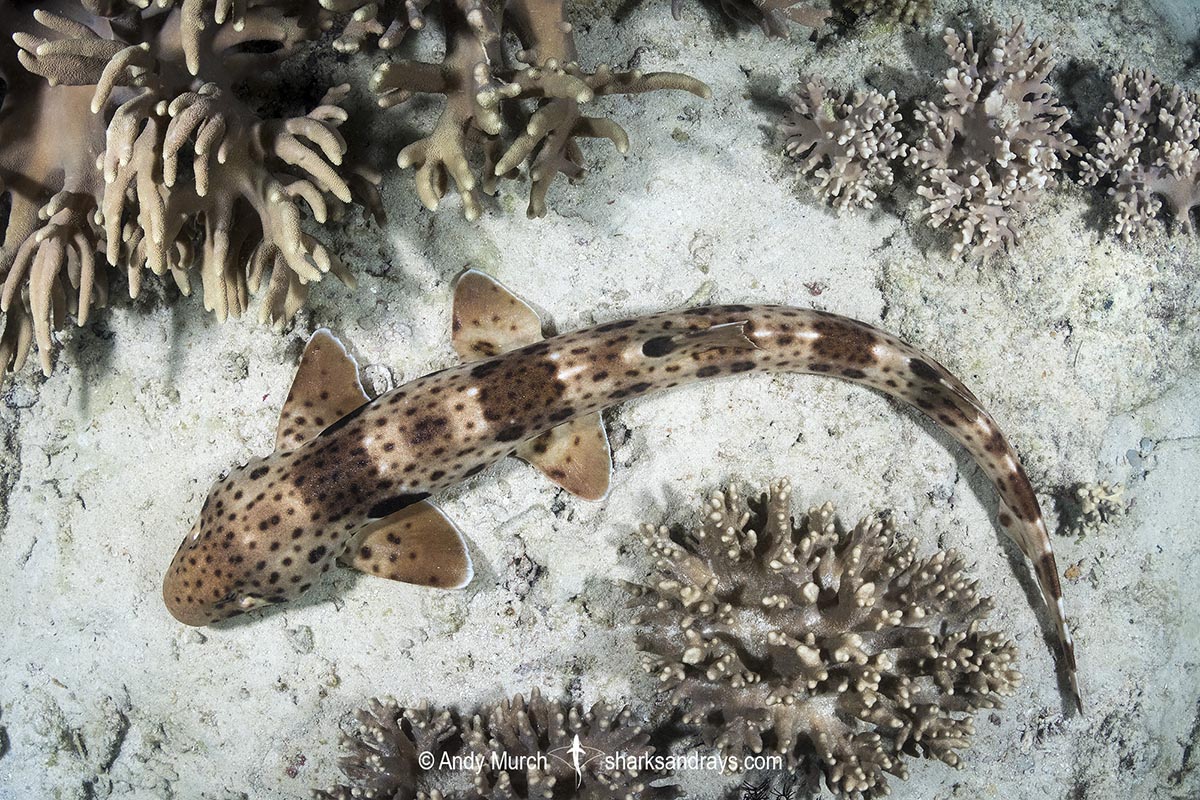Common names
Henry’s Epaulette Shark, Triton Bay Epaulette Shark.
Binomial
Hemiscyllium henryi.
Synonyms
None.
Identification
Elongated, slender body. Well developed pectoral and pelvic fins on fore-body (used partially for walking). Two equally sized dorsal fins on rear-body. Tail long and thin. Sub-terminal notch present.
Dorsal coloration similar to the common epaulette shark H. ocellatum but with a unique B shaped, double ocellus (eye-spot) just behind the gill area. Overall body light brown-tan with scattered small dark spots. Some spot groupings form leopard-like markings in larger animals. Dark patches along upper back with concentrations of dark spots, form 11-12 subtle saddles and bands along body and tail.
Ventrum pale.
Size
Maximum confirmed length 82cm.

Conservation Status
NEAR THREATENED
The Triton Bay Epaulette Shark is threatened by artisanal fishing as well as habitat loss and degradation. It is caught in gill nets, drift nets, hand-lining, and it is collected by hand or hand spear on intertidal reef flats at night.
Triton Bay Epaulette Sharks are targeted for their meat and fins throughout their range. Fishimng pressure is especially intense in Kaimana region. They may also be collected for the aquarium trade.
Henry’s Epaulette Shark also suffers from habitat degradation of reef flats from road construction in the coastal zones and climate change which has already resulted in large-scale coral bleaching events. Almost all warm-water coral reefs are projected to suffer significant losses of area and local extinctions, if temperatures continue to rise.

Habitat
Shallow sandy bays and coral reefs. From 3 to 30m
Distribution
Endemic to the Triton Bay area in far eastern Indonesia. Apparently restricted to the channel between Aiduma Island and mainland West Papua but further surveys may show that Henry’s epaulette shark has a broader range in southern West Papua.
Reproduction
Oviparous. Reproductive cycle poorly known.
Diet
Unknown. Probably benthic invertebrates.
Behavior
Nocturnal. Hides by day under corals venturing out at sunset to feed. Swims or ‘walks’ along on its flexible pectoral and pelvic fins. Wriggles through gaps in coral in search of prey or to seek protection.
Reaction to divers
Usually seen at night. May bolt when caught in a diver’s spotlight or remain motionless relying on camouflage.
Diving logistics
Although the region is seasonally visited by a handful of liveaboards, the best way to encounter Henry’s epaulette shark is to book a trip with Triton Bay Divers. This species can be found at night on their house reef in 3-5m depth.
What’s new
View our full list of updates
Similar species
Raja Ampat Epaulette Shark The Triton Bay epaulette shark is the only epaulette shark known to inhabit Papua Barat Province but if it proves to be more widespread than currently known, it may overlap with other species that inhabit southern PNG and Raja Ampat such as the Raja Ampat epaulette shark; distinguished by its rounder ocelli with a crescent or dumbbell shaped adjacent blotch.







